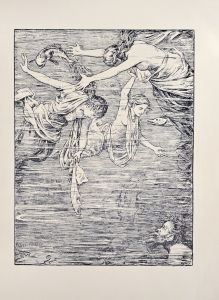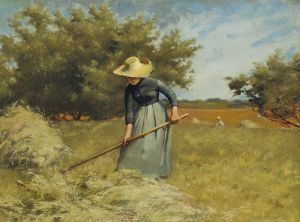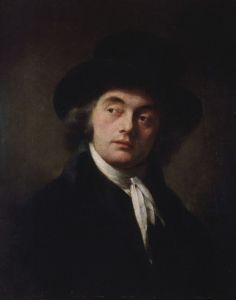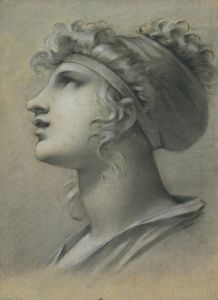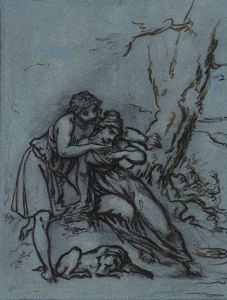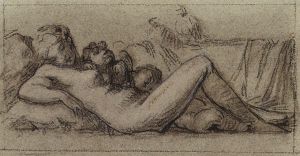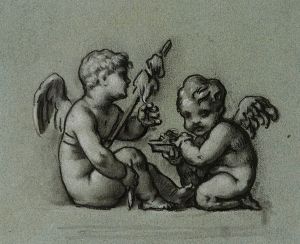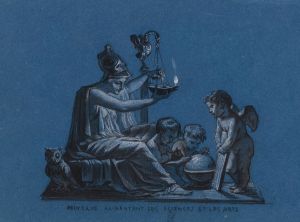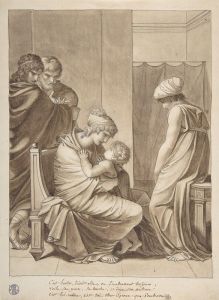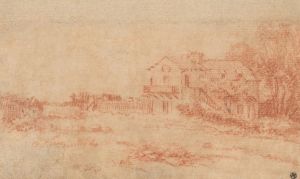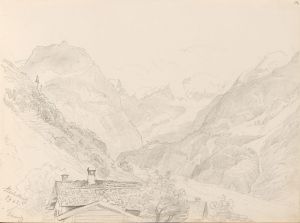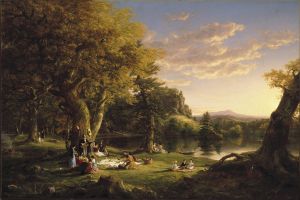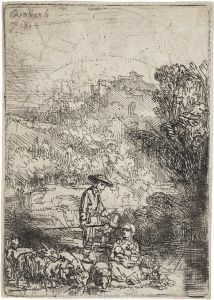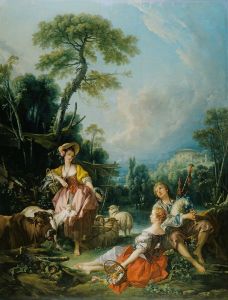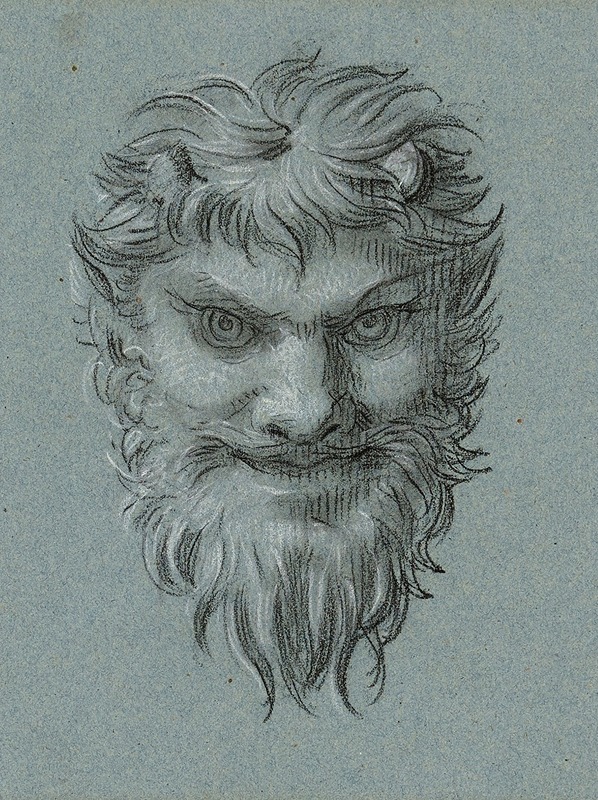
Pan
A hand-painted replica of Pierre-Paul Prud'hon’s masterpiece Pan, meticulously crafted by professional artists to capture the true essence of the original. Each piece is created with museum-quality canvas and rare mineral pigments, carefully painted by experienced artists with delicate brushstrokes and rich, layered colors to perfectly recreate the texture of the original artwork. Unlike machine-printed reproductions, this hand-painted version brings the painting to life, infused with the artist’s emotions and skill in every stroke. Whether for personal collection or home decoration, it instantly elevates the artistic atmosphere of any space.
Pierre-Paul Prud'hon, a French Romantic painter, created the artwork titled Pan. Prud'hon, known for his mastery of soft, atmospheric compositions and his ability to convey emotion through delicate use of light and shadow, was active during the late 18th and early 19th centuries. His works often reflected themes of mythology, allegory, and the human form, drawing inspiration from classical antiquity and the ideals of Romanticism.
Pan is a depiction of the Greek god Pan, a figure from ancient mythology associated with nature, shepherds, and rustic music. Pan is traditionally portrayed as a half-human, half-goat deity, embodying the untamed spirit of the natural world. In Prud'hon's interpretation, the god is rendered with a sense of grace and sensitivity, characteristic of the artist's style. The painting showcases Prud'hon's ability to blend classical themes with a Romantic sensibility, emphasizing mood and atmosphere over strict adherence to neoclassical precision.
The artwork is notable for its use of chiaroscuro, a technique Prud'hon employed to create depth and drama through contrasts of light and shadow. This approach enhances the three-dimensionality of the figure and imbues the scene with a dreamlike quality. The composition reflects Prud'hon's interest in the human form, as well as his skill in rendering anatomy with a sense of fluidity and naturalism.
While specific details about the commission, creation date, or current location of Pan are not widely documented, the painting is consistent with Prud'hon's broader body of work, which often explored mythological and allegorical subjects. His oeuvre includes other notable pieces such as Justice and Divine Vengeance Pursuing Crime and Portrait of Empress Joséphine, which similarly demonstrate his technical skill and emotional depth.
Prud'hon's art was highly regarded during his lifetime, and he received commissions from prominent figures, including Napoleon Bonaparte and Empress Joséphine. His work continues to be celebrated for its unique blend of classical influences and Romantic expression, positioning him as a significant figure in the transition between these artistic movements.
Further research may be required to provide additional context or details about Pan, as comprehensive information about this specific painting is limited in existing sources.





